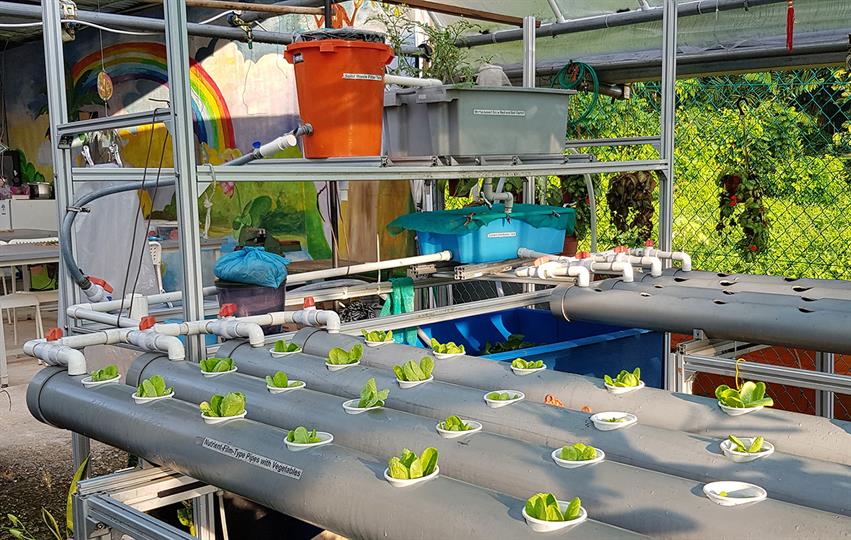Adjunct Professor Lee Kim Seng’s love for gardening took root since young, having spent his childhood at his family’s six-acres fruit farm in Malaysia. Back at home, he is the proud "parent" to some 60 bonsai plants and more than 100 pots of the Desert Rose and flowers.
At work, Adjunct Prof Lee gets his hands dirty alongside students from NUS Mechanical Engineering when he supervises them in their final-year project (FYP) of an aquaponics system at the Eng Kong Cheng Soon community garden.
“I love gardening and wanted to try something new. I thought it would be a challenge to venture into aquaponics because it combines aquaculture and hydroponics”, shared 65-year old Adjunct Prof Lee from NUS Mechanical Engineering.
The 2,044 square metre community garden, the largest in Singapore is made up of 80 vegetable plots leased out to nearby residents who are keen in hydroponics.
The first batch of FYP students designed and constructed the 23 square metre system in 2016, which is about the average size of a room in an HDB flat, using scraps they found in their school’s workshops and materials sponsored by Adjunct Prof Lee’s contacts. It has since expanded to about 60 square metres.
The hybrid aquaponics system had previously yielded vegetables such as butterhead lettuce, spring onion, purple lettuce and Chinese lettuce, as well as herbs including coriander and basil.
Adjunct Prof Lee said that the next batch of FYP students will further enhance the aquaponics system. The improvements will include incorporating LED lighting which will cut down the time needed to grow the vegetables, by a third (to 20 days instead of 28 days); double the number of solar panels which are used to power the lighting and water pump; and install a monitoring system so as to keep a tab on the PH value of the water supply and ammonium level.
I teach modelling and automation in manufacturing and a lot of the principles can be applied in the set-up and running of the aquaponics system. I’m very happy to put my specialisation into practice, impart the knowledge and skills to the students as well as communities, and do what I love – gardening.

A fish tank (in dark blue) is filled with white/red tilapia. The fish waste is pumped up to a solid waste separator (orange tank) and on to the grow-bed with a bell siphon (in grey) filled with clay pellets. The bacteria in the grow-bed converts the fish waste into vegetable fertiliser and is siphoned down to the distribution tank (in light blue). The distribution tank is connected to long grey pipes which have cut-out holes in them. The seedlings of leafy vegetables are planted in net pots placed in these holes. Their roots dangle in the pipes and absorb the nutrient-rich water flowing through. The excess water will then flow back to the fish tank. Edible plants such as cherry tomatoes can also be grown at the grow-bed, watered by the fish tank as well.